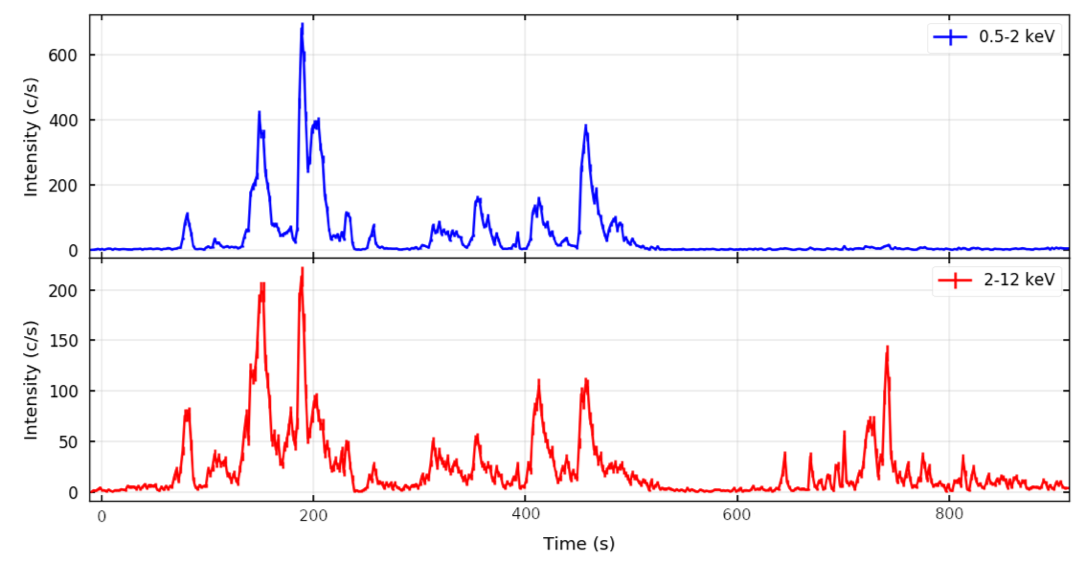NICER / ISS Science Nugget for July 4, 2019Dramatic changes in flaring behavior in only 15 minutesNICER has been continuing with observations and analysis of the transient X-ray source, Swift J1858.6-0814. The source was first discovered with NASA's Swift observatory on October 25, 2018). NICER confirmed the existence of prominent flares that can erupt in seconds (Ludlam et al. 2018, ATel #12158). These properties suggest that the source is an accreting compact object in a binary system, but the accretor may be either a black hole or a neutron star. The one precedent for flaring-only behavior is the transient black hole binary V404 Cygni (e.g., Kimura et al. 2016, Nature 529, 54). One might further argue that it is easier to understand flaring-only activity in the case of a black hole, since the flares would likely heat the hard surface of a neutron star and create persistent emission during times between flares. A sample of the NICER light curves is shown in the figure below. This is an example of results that seriously challenge both the physical intuitions and the data analysis strategies of the experienced NICER science team members.
Scientists work to understand X-ray variations in terms of physical concepts, such heating/cooling, or the competition between thermal/non-thermal emission processes, or the responses to ebb and flow in the accretion stream. When changes happen in these contexts, we expect to see a smooth relationship between temporal and spectral evolution. As an example, NICER light curves of the black hole binary GRS 1915+105 can be overlayed to form a common track, where intensity is plotted against the ratio of counts in two energy bands. On the other hand, the results for Swift J1858.6-0814 show the opposite situation. One can see that the ratio between the peaks in the top and bottom panels is drastically different for the flares seen after the 500 second mark, which are prominent in the lower panel and almost invisible in the upper panel. Such drastic spectral differences seriously challenge the ideas that flares exhibit one physical process, or that flares can be studied in groups (even the flares before 500 seconds show different ratios in bottom/top panel maxima). This is clearly a baffling source that is telling us something new about these systems. NICER
|



